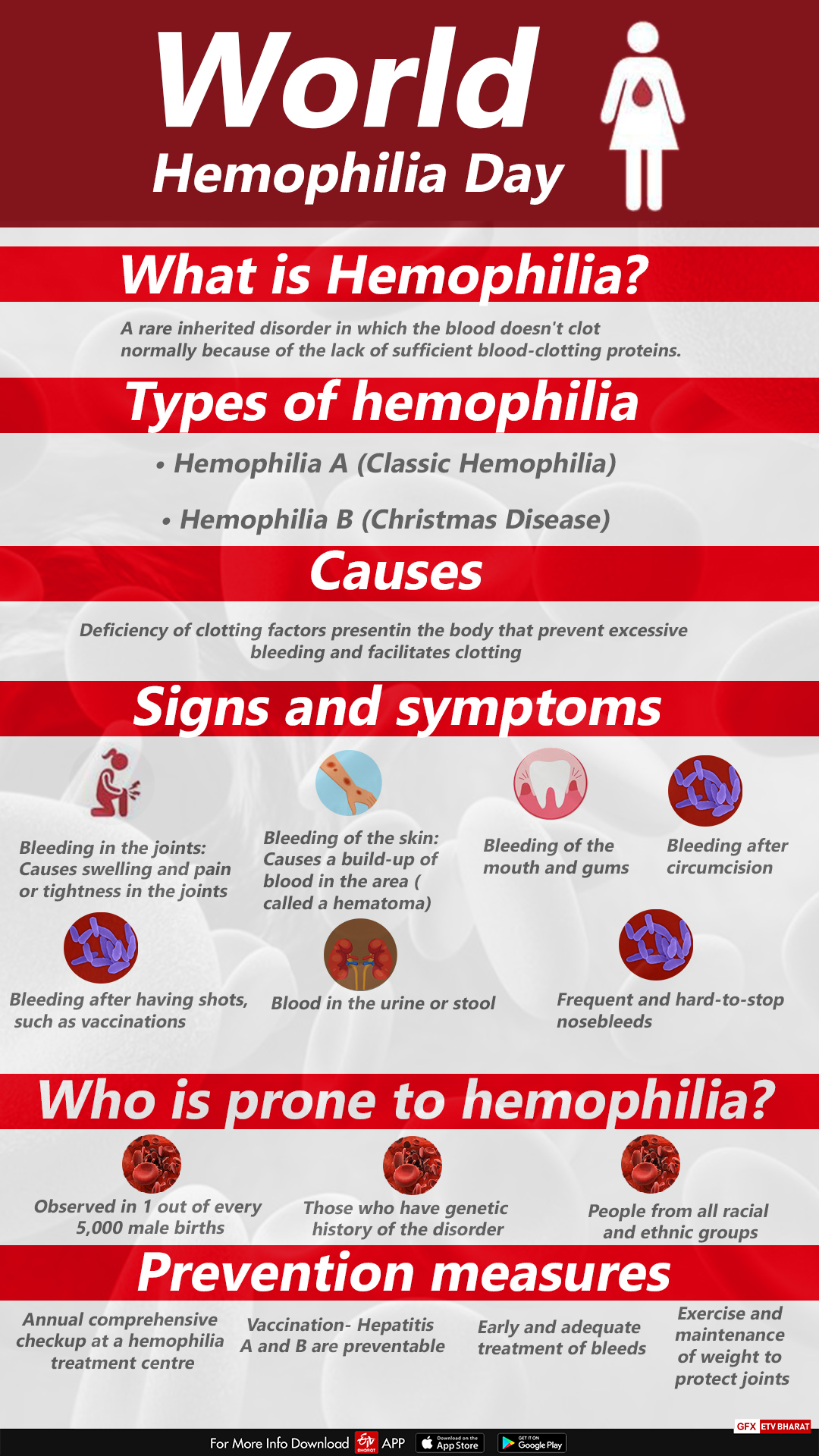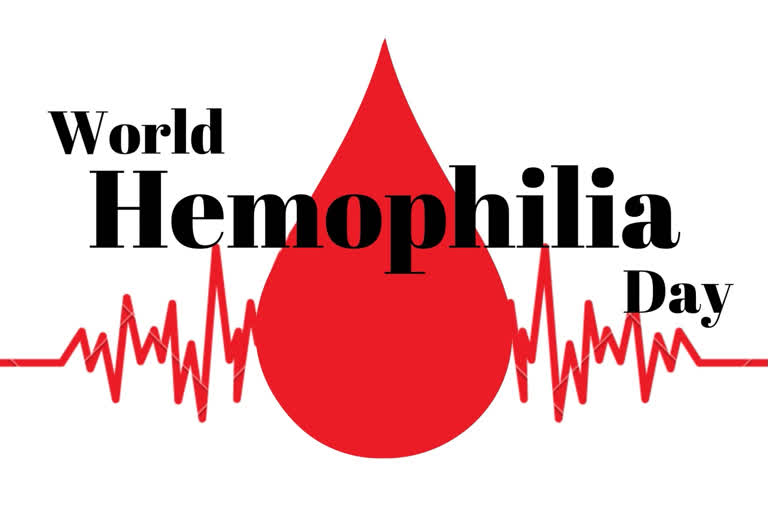Hyderabad: World Hemophilia Day is held annually on April 17. Since the last 30 years, the day is observed to spread awareness about hemophilia and other bleeding disorders. The longevity of this celebration is proof of the dedication and tight-knit nature of our community.

What is Hemophilia?
Hemophilia is a rare inherited disorder in which the blood doesn't clot normally because of the lack of sufficient blood-clotting proteins (clotting factors). A person having hemophilia bleeds for a long time after an injury than he would if his blood clotted normally.
The theme of World Hemophilia Day, 2020 is 'Get+involved'. It’s a call to action to help drive the WFH vision of 'Treatment for All' at the community and global level.
Causes of hemophilia
When a person bleeds, his body normally pools blood cells together to form a clot to stop the bleeding. The clotting process is encouraged by certain blood particles. Hemophilia occurs when the same person has a deficiency in one of these clotting factors.
There are several types of hemophilia, and most forms are inherited. However, about 30% of people with hemophilia have no family history of the disorder. In these people, an unexpected change occurs in one of the genes associated with hemophilia.
Acquired hemophilia is a rare variety of the condition that occurs when a person's immune system attacks clotting factors in the blood. It can be associated with:
• Pregnancy
• Autoimmune conditions
• Cancer
• Multiple sclerosis
Hemophilia can result in:
• Bleeding within joints that can lead to chronic joint disease and pain
• Bleeding in the head and sometimes in the brain which can cause long term problems like seizures and paralysis
• Death in case the bleeding is not stopped or if it occurs in a vital organ such as the brain
Types of hemophilia
• Hemophilia A (Classic Hemophilia)
• Hemophilia B (Christmas Disease)
Signs and Symptoms
• Bleeding in the joints. This can cause swelling and pain or tightness in the joints; it often affects the knees, elbows, and ankles
• Bleeding of the skin (which is bruising) or muscle and soft tissue causing a build-up of blood in the area (called a hematoma)
• Bleeding of the mouth and gums, and bleeding that is hard to stop after losing a tooth
• Bleeding after circumcision (surgery performed on male babies to remove the hood of skin, called the foreskin, covering the head of the penis)
• Bleeding after having shots, such as vaccinations
• Bleeding in the head of an infant after a difficult delivery
• Blood in the urine or stool
• Frequent and hard-to-stop nosebleeds
Who is affected?
Hemophilia occurs in 1 out of every 5,000 male births. Currently, about 20,000 males in the United States are living with the disorder. Hemophilia A is about four times as common as hemophilia B, and about half of those affected have a severe form. Hemophilia affects people from all racial and ethnic groups.
When to see a doctor?
• Signs or symptoms of bleeding into the brain
• An injury in which the bleeding won't stop
• Swollen joints that are hot to the touch and painful to bend
A person having a family history of hemophilia may want to undergo genetic testing to see if he's a carrier of the disease before he starts a family.
Key prevention messages from the National Hemophilia Foundation’s National Prevention Program:
- Get an annual comprehensive checkup at a hemophilia treatment centre
- Get vaccinated—Hepatitis A and B are preventable
- Treat bleeds early and adequately
- Exercise and maintain a healthy weight to protect your joints
- Get tested regularly for blood-borne infections
Hemophilia in India
Despite the improvement in the medical technologies for the treatment of the disorder, health experts believe that nearly 80 per cent of Indians with the serious blood disorder are not diagnosed due to the absence of proper diagnostic facilities in remote areas. India, with nearly two lakh cases, is estimated to have the second-highest number of patients with a lifelong bleeding disorder.
Only about 20,000 patients are registered with Hemophilia Federation of India while over 1.5 lakh are still not brought under the registry until diagnosed. Over 80 per cent are undiagnosed.
World Hemophilia Day, therefore, is an opportunity to show the world how important taking action is.
Also read: Did US warn NATO, Israel of COVID 19 in November 2019?



